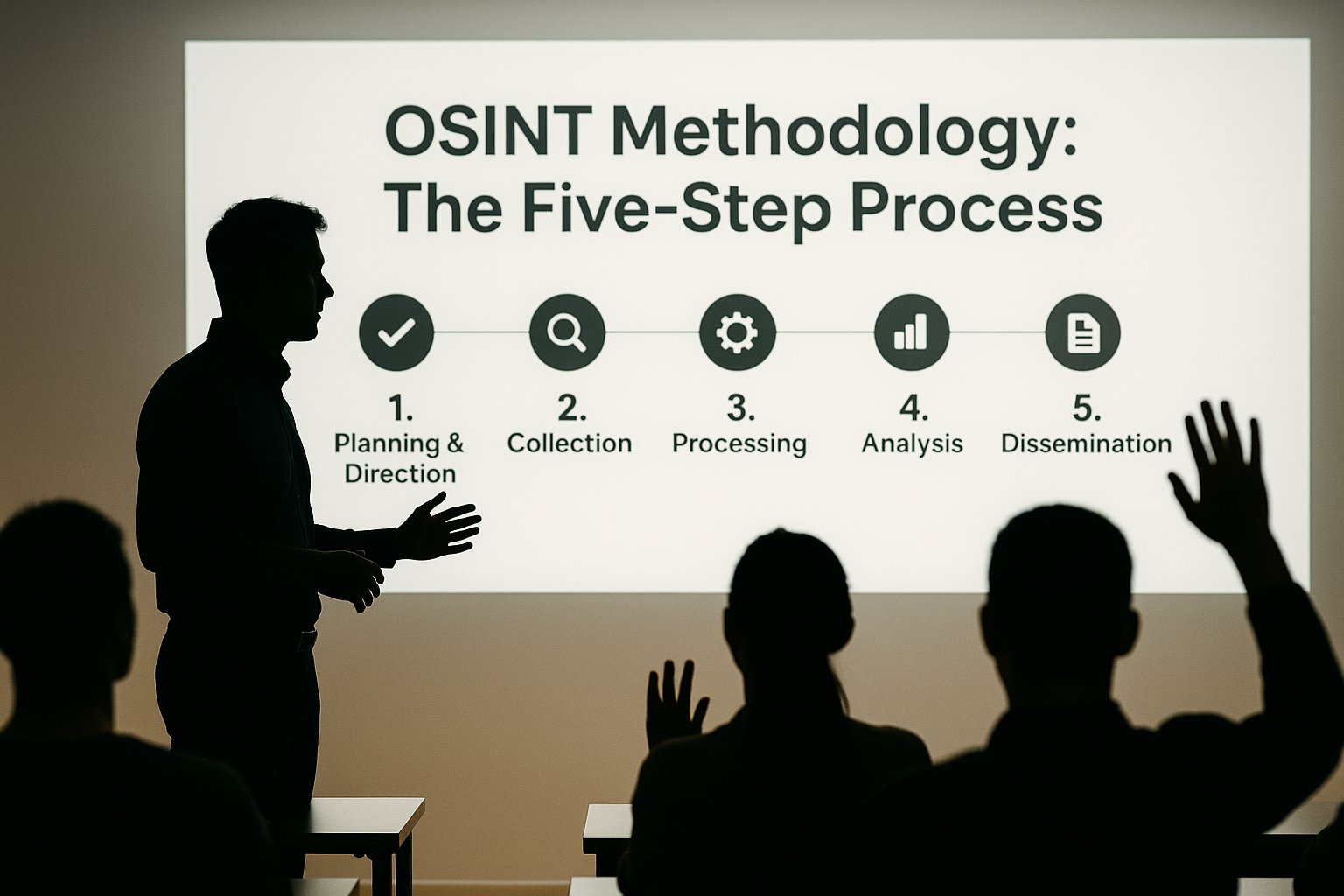Before jumping into tools or platforms, every OSINT operation should start with a plan. But what does an effective open-source investigation actually look like? Professionals rely on a structured methodology, often boiled down to five steps. Is your research as rigorous as it should be?
A robust OSINT investigation follows five main steps: define mission, gather sources, verify data, analyze relationships, and report insights. As Dragown explains, categories like Network, Employees, and Breach domains fit into this framework (Medium).
Step-by-Step Breakdown:
- Planning & Direction:
Define the objective clearly. What question are you trying to answer? Knowing this helps decide tools and sources. - Collection:
Use legal and ethical methods to gather public data. This could involve scraping, passive observation, or manual review. - Processing & Exploitation:
Organize and clean the data. This might involve converting formats, extracting metadata, or filtering duplicates. - Analysis & Production:
Interpret what you’ve found. Are patterns emerging? Can you confirm, refute, or contextualize the hypothesis? - Dissemination & Feedback:
Present the findings clearly, often in reports or visualizations. Feedback ensures quality and refinement.
This methodology mirrors traditional intelligence cycles but adapted for open-source work. It encourages discipline, documentation, and ethical boundaries.
Following a process doesn’t restrict creativity, it strengthens outcomes. Whether you’re verifying a viral video or mapping a threat network, using a structured OSINT methodology keeps your investigation credible, clear, and repeatable.
- OSINT Framework: https://osintframework.com
- SANS OSINT Training: https://www.sans.org/cyber-security-courses/open-source-intelligence-gathering/
- Dragown’s methodology article (ResearchGate, Medium)





